The Romanian capital is a whimsical mix of unique Wallachian architecture, the finest museums in Southeast Europe, and pompous projects from the era of communist leader Nicolae Ceausescu. Once upon a time, the legendary and gloomy Vlad Tepes lived and ruled in Bucharest, whose personality served as a prototype for the bloody Count Dracula. The city is full of mysteries, interesting discoveries and unexpected finds.
Much of the historical heritage of Bucharest has been irretrievably lost, as in the 20th century old buildings, churches and streets were demolished by entire blocks. But much has been preserved - picturesque palaces, the old quarter of Lipskani, the remains of a medieval fortress of the Wallachian princes. Today Bucharest has been revived. More and more tourists are walking the streets, architectural monuments are gradually being restored and infrastructure is being developed.
What to see and where to go in Bucharest?
The most interesting and beautiful places for walking. Photos and a short description.
- Palace of Parliament
- Palace of Justice
- Palace of Cantacuzino
- Creculescu Palace
- Cotroceni
- Mogoshoaya
- National Museum of Art of Romania
- Ethnographic Museum of Dmitry Gusti
- Museum of Peasant Art of Romania
- National Museum of Romanian History
- Romanian Athenaeum
- CEC bank building
- Coltea hospital building
- University Central Library
- Stavropol Church
- Antim Monastery
- Church of Creculescu
- Patriarchal Cathedral
- Kurtya-Veche
- Lipscany street
- Boulevard of the Union
- Triumphal Arch
- Cismigiu Gardens
- Bucharest Botanical Garden
- Herastrau Park
Palace of Parliament
A monster-like building in the center of the city, for the sake of which an impressive part of the historical districts was demolished and an artificial hill was poured. The hulk was erected at the request of the dictator N. Ceausescu, more than one billion dollars was spent on the construction. Previously, the building was called the "House of the People", but after the overthrow of the communist government, it was renamed the "Palace of Parliament".
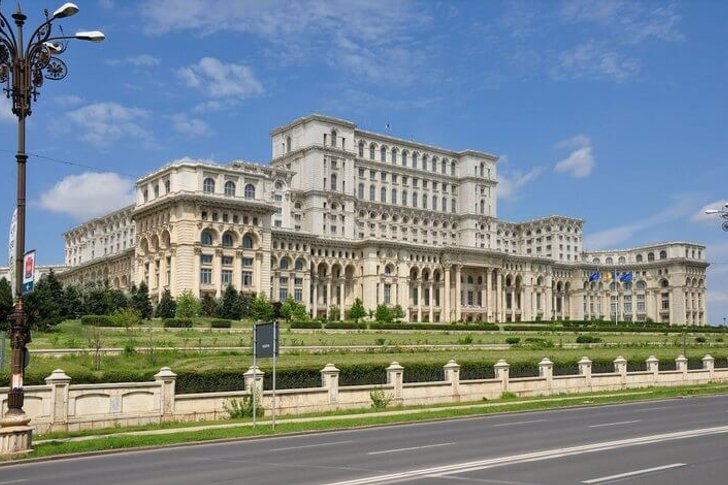
Address: Palace of Parliament, Bucharest, Romania
Phone: +40 21 404 1000
Opening hours: 10:00 - 18:00
Palace of Justice
The construction of the end of the XIX century, where the city court of appeal sits. The front facade of the building, facing the embankment of the Dymbovitsa River, is decorated in a classic French style, it contains statues symbolizing the Law, Truth, Justice and other virtues. The Palace of Justice occupies an area of more than 33 thousand m², the total number of interior rooms is about 700. The last restoration was carried out in the early 2000s.

Address: Palace of Justice, Bucharest, Romania
Phone: +40 21 317 14 00
Opening hours: 08:00 - 16:00
Palace of Cantacuzino
The building of the beginning of the 20th century, located on one of the oldest city streets. Previously, the palace belonged to one of the mayors of Bucharest, D.G. Cantacuzino. This is an elegant building in the style of French classics with neat splashes of Art Nouveau, Rococo and Art Nouveau. The facades of Cantacuzino are richly decorated with decorative elements; famous masters of their time were invited to decorate the interior of the palace.
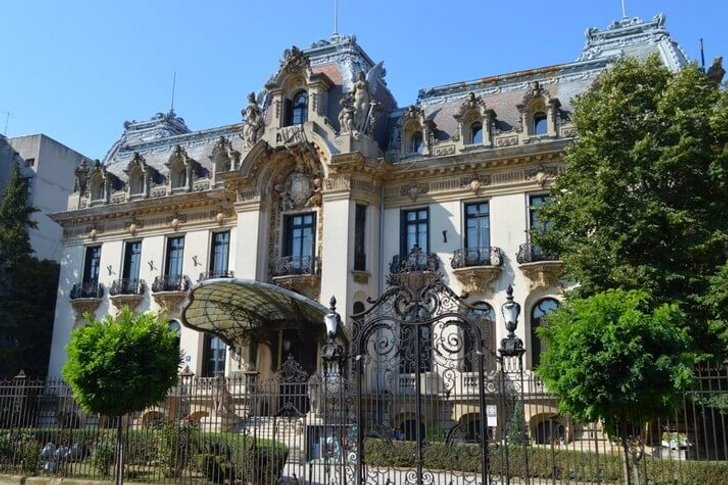
Address: Palace of Cantacuzino, Bucharest, Romania
Opening hours: Monday to Sunday: 10:00 - 18:00
Creculescu Palace
The palace was built by the architect D. Antonescu at the beginning of the 20th century; the building is considered one of the most picturesque in Bucharest. During the construction, a mixture of architectural styles was generously used: baroque, neo-gothic, French classicism. The palace was created in imitation of French architecture, as the Romanian nobility in the late XIX - early XX centuries tried to focus on France in everything.
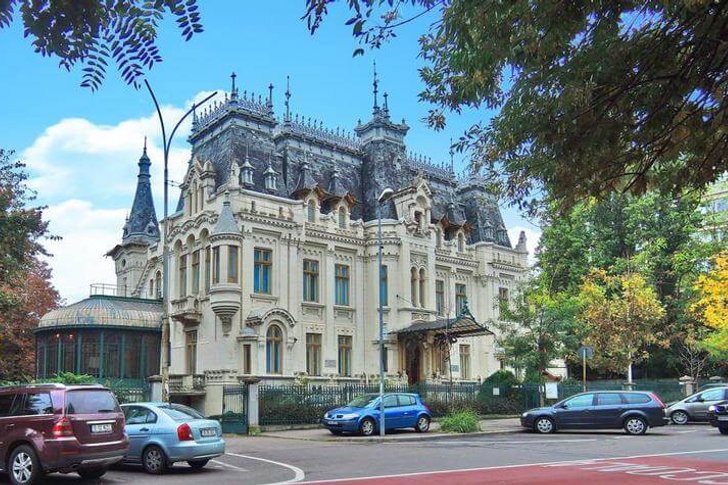
Address: Creculescu Palace, Bucharest, Romania
Opening hours: Monday-Sunday: 10:00-18:00
Cotroceni
The current residence of the President of Romania. The building was built at the end of the 19th century for the ruler Carol I in the Brynkovian architectural style. This unique style of construction originated on the territory of the former Wallachia in the 18th century. It is distinguished by the presence of a large number of decor, oriental elements, openwork arches and light flying structures. Cotroceni was built according to the design of the French architect P. Gottero.
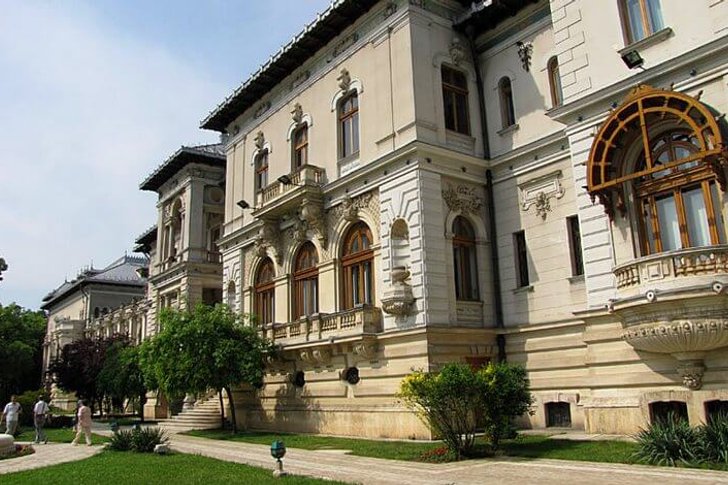
Address: Cotroceni, Bucharest, Romania
Opening hours: 10:00 - 18:00
Mogoshoaya
Palace and park ensemble, located 10 km. from the capital of Romania. It is one of the brightest examples of Brynkovyan architecture. The complex served as the summer residence of the Romanian rulers. At the beginning of the 18th century, the Turks took the palace (Wallachia was under Ottoman rule for a long time). The building and territory of the park were badly damaged during the Russian-Turkish war. After the restoration of 1860-1880. Mogoshoaya passed into the possession of the aristocratic Bibescu family, in 1945 the palace passed to the state.
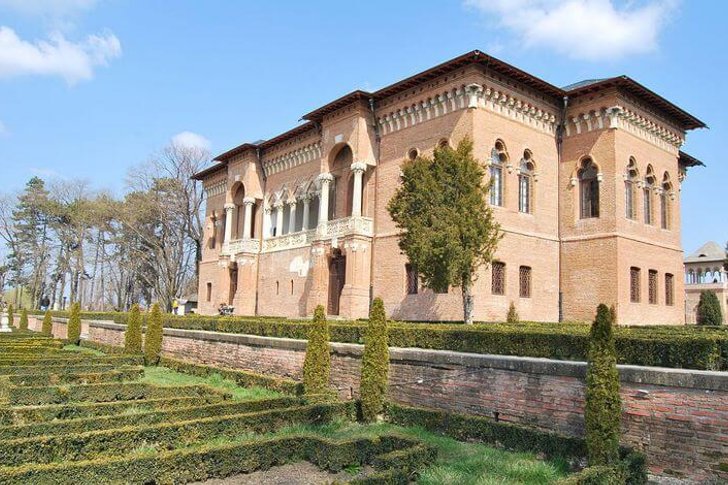
Address: Mogoshoaya, Bucharest, Romania
Opening hours: 10:00 - 20:00
National Museum of Art of Romania
The museum was founded in 1950. Its first exhibits were works of art from the collection of the Romanian ruler Carol I. Subsequently, the exposition was replenished through private collections. The museum contains samples of arts and crafts: antique furniture, tapestries, dishes, icons, carpets. A large part of the museum funds are paintings by famous painters - Romanian, European and Russian.
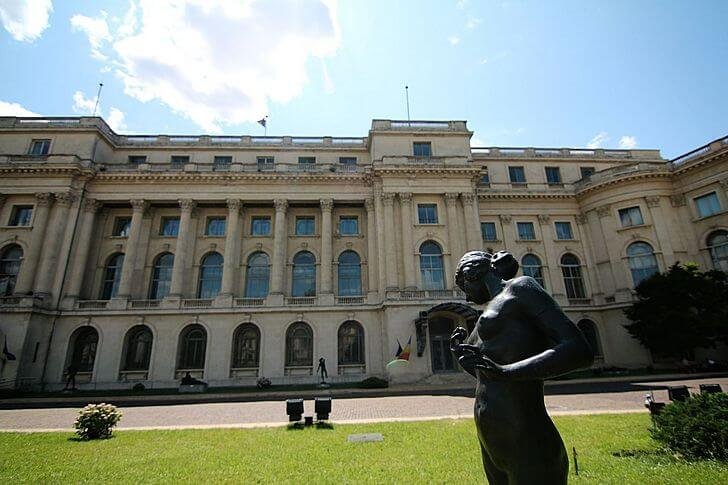
Address: National Museum of Art of Romania, Bucharest, Romania
Phone: +40 21 314 81 19
Opening hours: Tuesday-Sunday: 10:00-18:00; Monday: Closed.
Ethnographic Museum of Dmitry Gusti
An open-air museum showcasing the life of a Romanian village. Houses for the exhibition were brought from different parts of the country. In addition to residential buildings, the territory has wooden churches, traditional outbuildings, windmills and other historical sites typical of rural Romania. The museum exposition is located on the shore of Lake Herastrau in a picturesque green park.
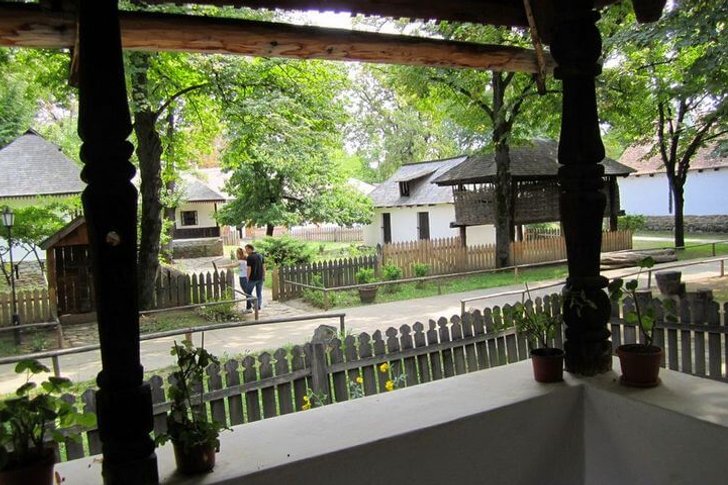
Address: Ethnographic Museum of Dmitry Gusti, Bucharest, Romania
Opening hours: Tuesday-Saturday: 10:00-18:00; Sunday-Monday: Closed.
Museum of Peasant Art of Romania
The exposition was founded at the beginning of the 20th century. It tells about the life, life, traditions and occupations of a Romanian peasant family. In the museum you can see a variety of national costumes, the furnishings of a peasant dwelling, various works of folk art. In 1944, the building housed a museum of two socialist leaders - Lenin and Stalin, the original exhibits were taken out. But in 1990, the collection returned to its place.
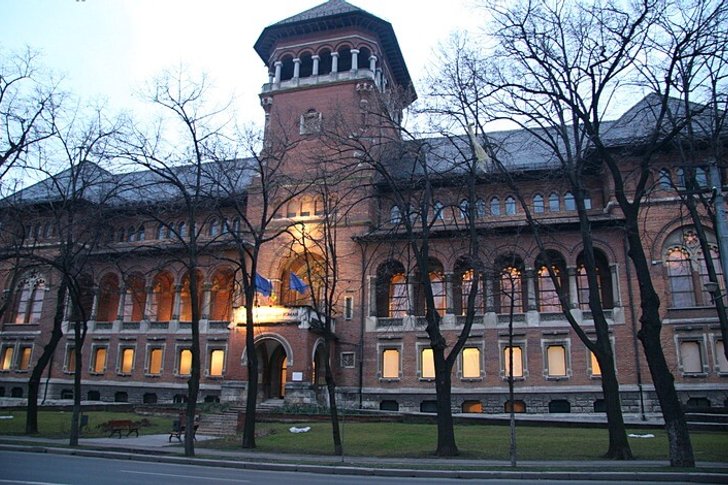
Address: Museum of Peasant Art of Romania, Bucharest, Romania
Opening hours: Tuesday - Sunday: 10:00 - 18:00
National Museum of Romanian History
The museum is located in the historical building of the main city post office, earlier this building was called the "Post Palace". The exposition covers all historical periods - from the Paleolithic era to the present. The museum contains an extensive and rich archaeological collection of various artifacts, which can trace the history of the states - the predecessors of modern Romania.
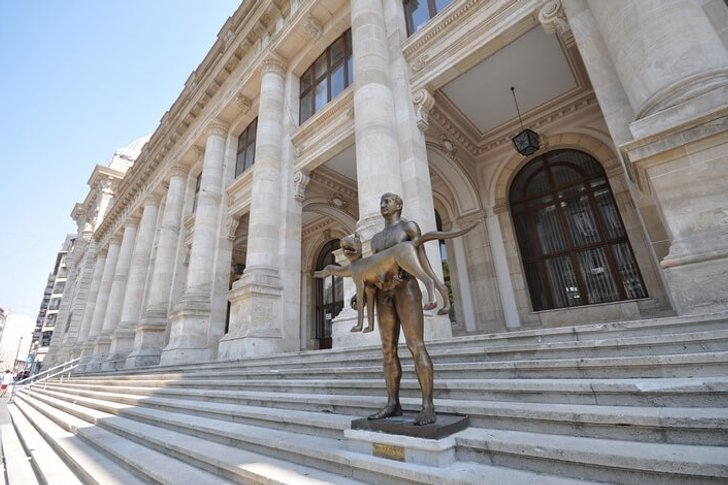
Address: National Museum of Romanian History, Bucharest, Romania
Phone: +40 21 313 1300
Opening hours: 10:00 - 18:00
Romanian Athenaeum
A cultural center created at the end of the 19th century on the initiative of members of a cultural society. Now on its territory is the Philharmonic. J. Enescu. At different times, the composer Maurice Ravel, the famous conductor and violinist David Oistrakh, the pianist Svyatoslav Richter and other equally worthy representatives of the musical art performed here. The main facade of the Ateneum is decorated with Ionic columns, the building is crowned with an impressive Byzantine dome.

Address: Romanian Athenaeum, Bucharest, Romania
Phone: +40 21 315 68 75
Opening hours: 10:00 - 22:00
CEC bank building
Historic building of the XIX century, which housed the main bank of Romania. According to many tourists, this building is the most picturesque in Bucharest. A museum or a hall for ceremonial receptions could well be located here. The bank's headquarters is a majestic neoclassical mansion with a large central dome, small side domes and monumental columns.

Address: CEC bank building, Bucharest, Romania
Opening hours: 09:00 - 17:00
Coltea hospital building
The hospital is the oldest in Bucharest; it was founded at the beginning of the 18th century at the expense of the Vacaresti family of patrons. A century later, as a result of a strong earthquake, the building was destroyed, it was restored only by the end of the 19th century. Currently, the Ministry of Health is located on the territory, so it is impossible to go inside and admire the interiors like an ordinary tourist.
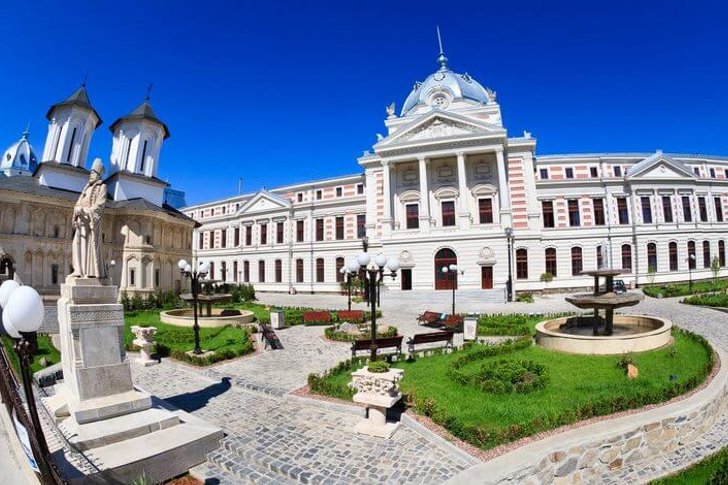
Address: Coltea hospital building, Bucharest, Romania
Opening hours: 24/7
University Central Library
The building appeared in 1891-1895. At first, it housed the royal foundation, and since 1947 the university library has moved here. In front of the mansion there is a monument in honor of the ruler Carol I - the first king of the Principality of Wallachia and Moldavia. Unfortunately, the library's collections were badly damaged during a fire in 1989. The building was designed by the French architect P.Gottero.
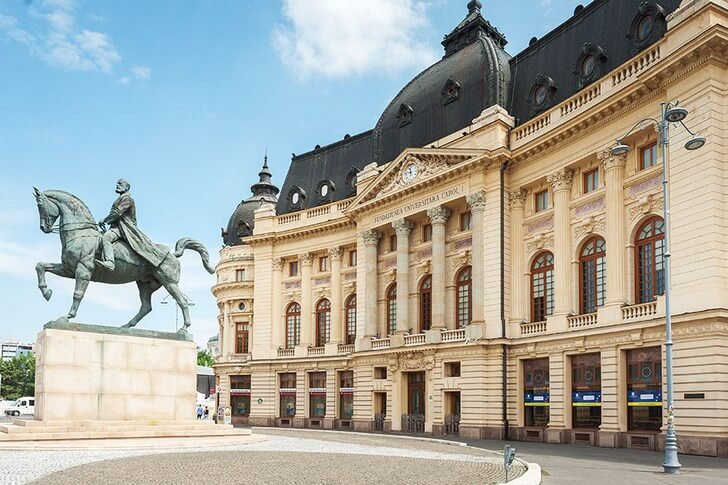
Address: University Central Library, Bucharest, Romania
Phone: +40 21 317 50 80
Opening hours: 08:00 - 20:00
Stavropol Church
One of the most respected temples in Bucharest, which arose in 1724 during the reign of Nicholas Phanariot. The architecture of the building is elegant and picturesque Brâncoveni style, very characteristic of some of the historical buildings of Bucharest. The interior design is dominated by the Byzantine style. The church is decorated with frescoes, skillful wooden and stone sculptures and beautiful paintings.
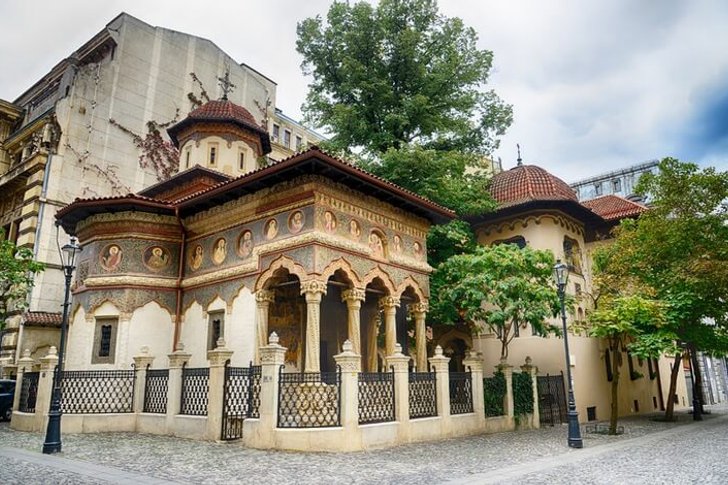
Address: Stavropol Church, Bucharest, Romania
Opening hours: 09:00 - 17:00
Antim Monastery
The current male monastery, named after its founder, Metropolitan Antim Iviryanu. The monastery was built on the site of a wooden church in 1713-15. From the end of the 18th century, a school of clergy began to operate at the monastery. In the middle of the 20th century, all the monks were arrested, and the monastery itself was dissolved. The restoration was carried out in the 60s. thanks to the initiative of the hierarchs of the Romanian Church.
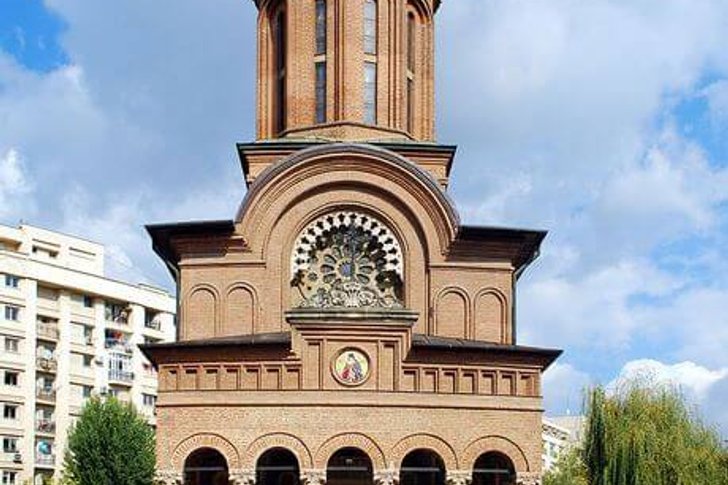
Address: Antim Monastery, Bucharest, Romania
Opening hours: 08:00 - 20:00
Church of Creculescu
One of the oldest and most respected churches in the Romanian capital. The temple was built in the classical Brynkovyan style, combining Italian, Byzantine and Oriental architecture. The facade and internal walls are decorated with frescoes by the Romanian painter G. Tartarescu, which are made in an unusually realistic manner. The Orthodox of Bucharest revere this church very much, during services there is often no free space inside.
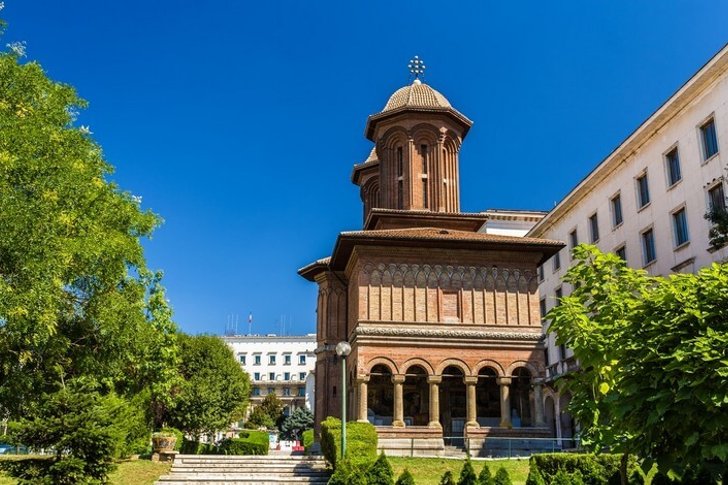
Address: Church of Creculescu, Bucharest, Romania
Opening hours: 08:00 - 21:00
Patriarchal Cathedral
The cathedral was built in honor of Saints Constantine and Helena in the middle of the 17th century. In the course of several reconstructions over the centuries, the building has lost its original appearance, only semicircular facade arches have been preserved from the original. Unfortunately, the name of the architect remains unknown. Since 1925, the Patriarchal Cathedral has been the main church of the Orthodox Church in Romania. Not far from the temple is the residence of the Romanian Patriarch.
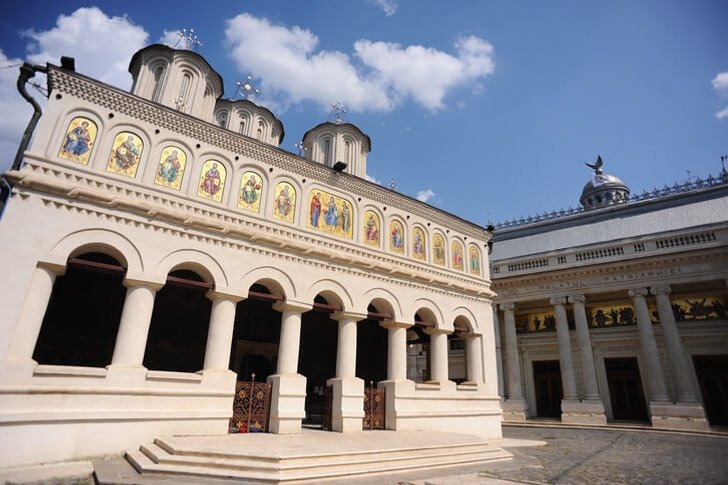
Address: Patriarchal Cathedral, Bucharest, Romania
Phone: +40 21 315 3480
Opening hours: 08:00 - 20:00
Kurtya-Veche
The former residence of the princes of Wallachia, which also served as a defensive fortress. The complex was built in the XIV century, but soon fell into disrepair and collapsed. The fortress entered its heyday under Vlad Tepes. The ruler expanded the territory and practically rebuilt the fortifications. At the end of the 18th century, the rulers moved to another place, and the surrounding lands were sold to private individuals. Nowadays, the ruins of the fortress are recognized as a national monument.
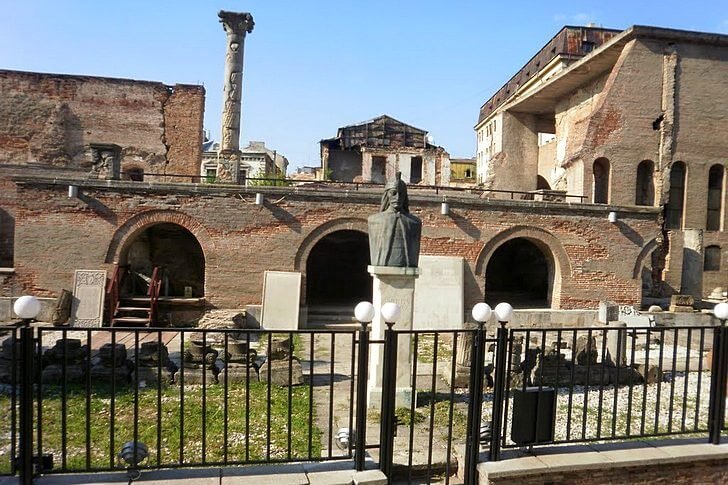
Address: Kurtya-Veche, Bucharest, Romania
Opening hours: Luni-Duminică: 11:00 - 23:00
Lipscany street
Pedestrian street in the central part of Bucharest. In the Middle Ages, the busiest shopping district of Wallachia, later called Lipskani, was located around it. Since then, little has changed - in this part of the city life is seething around the clock, restaurants and bars almost never close, tourists come here for the undying atmosphere of the holiday. The historic district of Lipscani miraculously survived the massive demolition of old buildings during the Ceausescu era.
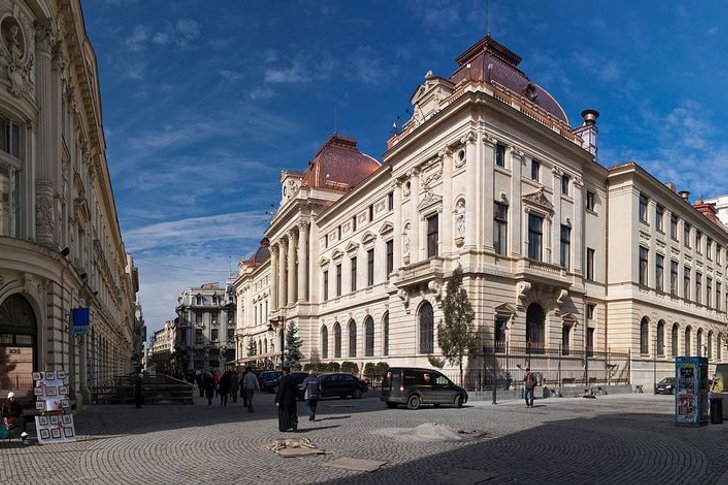
Address: Lipscany street, Bucharest, Romania
Opening hours: 09:00 - 21:00
Boulevard of the Union
A wide avenue that starts from the Palace of the Parliament and stretches through the center of Bucharest for 3 km. to Alba Iulia square. It is often compared to the Champs Elysees in Paris (sometimes Bucharest is even called the "Paris of the East"). The entire architectural ensemble of the Boulevard was rebuilt in the 80s. XX century and was intended to accommodate the administration and government structures. Previously, the historical part of Bucharest with buildings from past centuries was located on this site.
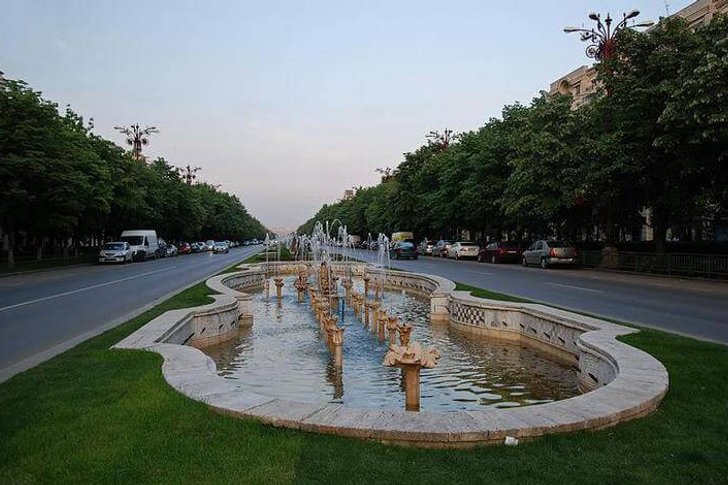
Address: Boulevard of the Union, Bucharest, Romania
Opening hours: Monday to Sunday: 10:00 - 22:00
Triumphal Arch
The monument was erected on the Kiselev highway in the first half of the 20th century. Until 1922, a wooden analogue of the monument stood here. The triumphal arch of Bucharest is very similar to the one in Paris, but is not its complete analogue. The monument was built in honor of the defenders of the independence of Romania, a group of prominent Romanian architects worked on the project: D. Pachurea, P. Antonescu, A. Calinescu and others.

Address: Triumphal Arch, Bucharest, Romania
Phone: +40 21 305 5555
Opening hours: 10:00 - 22:00
Cismigiu Gardens
The park area, created on the initiative of Count Kiselev, the head of the provisional administration of Romania after the end of the Russian-Turkish war. The garden was created on the swampy outskirts of Bucharest according to the project of the Austrian landscape designer V. Mayer. Now the park is located in the city center. It has colorful flower alleys and a system of artificial ponds. The garden is decorated with plants brought from all over Romania.
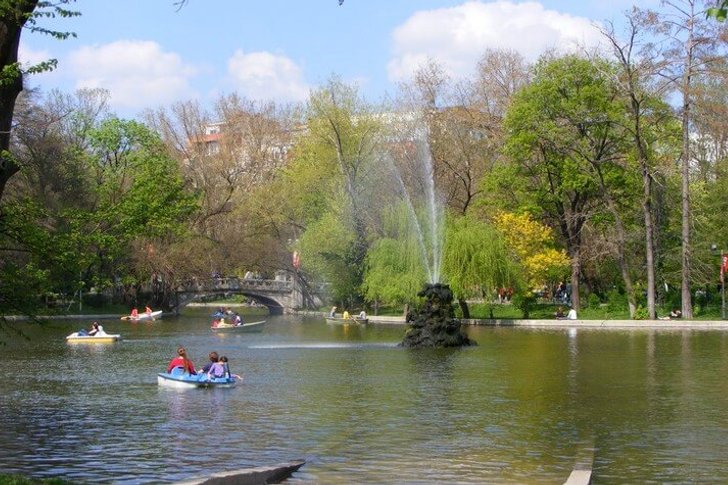
Address: Cismigiu Gardens, Bucharest, Romania
Phone: +40 21 315 21 63
Opening hours: 06:00 - 22:00
Bucharest Botanical Garden
The city botanical garden is the real pride of the Romanian capital. A large number of rare and unique plants are collected here. The garden was founded in 1860 on the initiative of the botanist K. Davile, at first it occupied a small area of 7 hectares. Gradually, the territory grew, the collection of plants replenished, and the garden began to run out of space. In 1884, it was decided to move the park to the Cotroceni area, where it is located to this day.
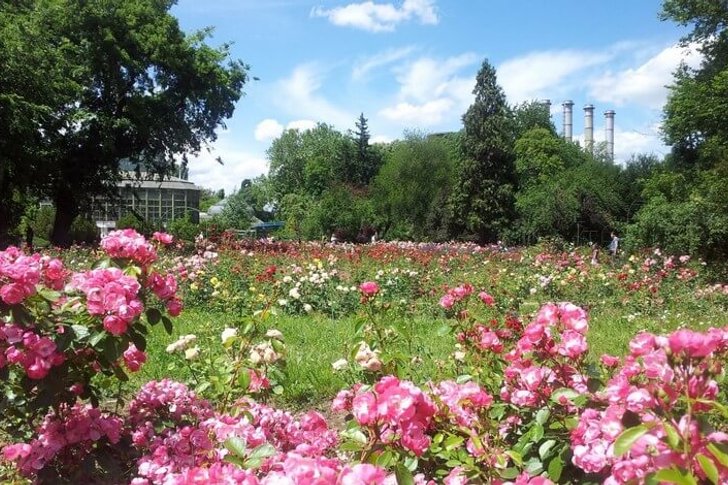
Address: Bucharest Botanical Garden, Bucharest, Romania
Phone: +40 21 318 45 25
Opening hours: 08:00 - 20:00
Herastrau Park
A park located around the lake of the same name in the northern part of Bucharest. Until the 30s. In the 20th century, there were swamps in this place. The park had grown to its modern borders by the 1950s. On the territory there is the Ethnographic Museum of Dmitry Gusti, a large recreational area, fountains, bicycle paths and playgrounds for outdoor games. On Lake Herastrau, if desired, you can take a boat trip.

Address: Herastrau Park, Bucharest, Romania
Opening hours: 05:00 - 23:00
